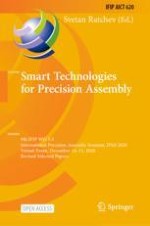1 Introduction
2 Background
2.1 Head-Mounted Devices for Cognitive Assistance
2.2 Technology Acceptance
3 Interview Study: Method and Procedure
3.1 Findings
Category | Formulated advantages |
|---|---|
User experience | Location: display is located in the worker’s field of view (14) |
Adaptivity and control: the boom arm can be folded back and forth with one hand (10) | |
Mobility: to move freely (10) | |
Support: see instructions and do something else at the same time (6) | |
Field of view: hardly restricted (5) | |
Pleasure: funny and interesting (5) | |
Ergonomics | Comfort: pleasant wearing comfort (2) |
Individually adjustable (1) | |
Device characteristics | Broad application areas: Useful for several workstations (2) |
Input and output: voice control and sound reproduction (2) |
Category | Formulated disadvantages |
|---|---|
User experience | Quality: blurred, fuzzy, pixelated image (11), not possible to see the complete screen content (13), voice control (1) |
Familiarity: unfamiliar (6) | |
Ergonomics | Health: pressure on the head leading to headache (8 times), strenuous for the eyes (12) |
Discomfort: uncomfortable (5), annoying feeling to always have something on the head (4), always in the field of view (9) | |
Device characteristics | Hardware: display is very small (26) |
Physical stability: perceived as unstable (18) |
